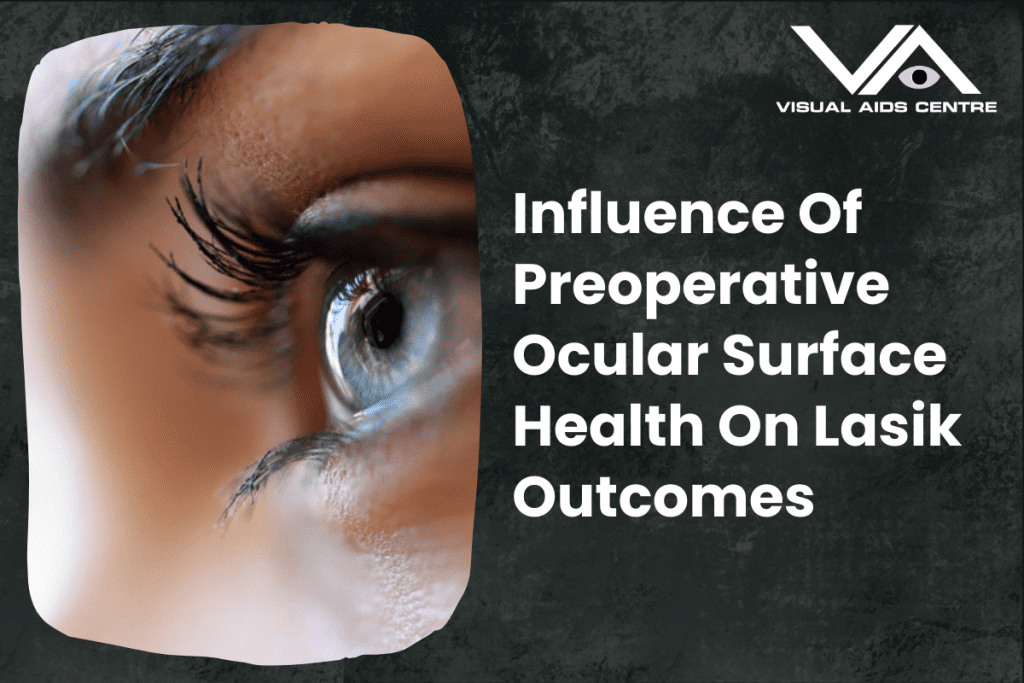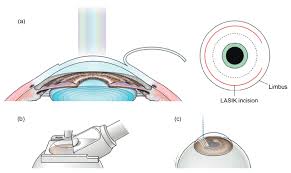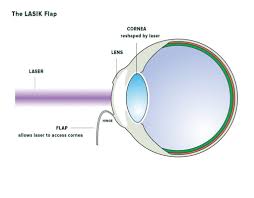Table of Contents
TogglePreoperative ocular surface health plays a critical role in determining the success of LASIK surgery, affecting both visual outcomes and post-procedure comfort.
Unhealthy ocular surfaces can lead to suboptimal results, prolonged recovery, and increased complications.
This blog explores the significance of evaluating and optimising the ocular surface before LASIK and how it shapes the patient’s experience and outcome.

Importance of Ocular Surface Health in LASIK
Why Ocular Surface Health Matters?
The ocular surface, including the cornea, conjunctiva, and tear film, forms the foundation on which LASIK surgery is performed. Any irregularity here can directly impact the accuracy of corneal measurements, laser application, and healing after surgery.
- Accurate Measurements: Ocular surface irregularities can alter keratometry and topography readings, leading to imprecise preoperative plans.
- Postoperative Healing: A compromised ocular surface may result in delayed epithelial recovery or chronic dryness, hindering visual quality and patient satisfaction.
Ensuring a healthy ocular surface is paramount to maximising LASIK outcomes.
Key Conditions Affecting the Ocular Surface
Several conditions can compromise the ocular surface before surgery, necessitating early identification and management:
1. Dry Eye Disease (DED):
- One of the most prevalent conditions affecting LASIK outcomes.
- Disrupts the tear film, leading to inconsistent measurements and postoperative discomfort.
- Blepharitis and Meibomian Gland Dysfunction (MGD):
- Can result in meibum deficiency, increasing the risk of evaporative dryness.
- Corneal Epithelial Defects or Irregularities:
- May impact laser energy absorption and corneal reshaping.
- Conjunctival Allergies or Inflammations:
- Can exacerbate dryness or irritation during and after the procedure.
Failing to address these factors can compromise the patient’s vision clarity and overall satisfaction.
The Link Between Ocular Surface Health and LASIK Outcomes
Impact on Preoperative Assessments
LASIK relies on precise diagnostic data, such as keratometry, pachymetry, and topography. A compromised ocular surface interferes with these metrics, leading to:
- Flawed preoperative ablation maps.
- Under- or overcorrection in refractive surgery.
For example, dry eye disease causes variability in tear film integrity, leading to inaccurate corneal curvature measurements.
Influence on Postoperative Results
An unhealthy ocular surface can also disrupt healing, prolonging recovery and increasing risks of complications such as:
- Postoperative Dry Eye: With LASIK involving temporary severance of corneal nerves, pre-existing dry eye symptoms may be exacerbated.
- Flap-Related Issues: Corneal irregularities increase the risk of flap microstriae or epithelial ingrowth.
- Poor Visual Quality: Patients may experience glare, halos, or fluctuating vision as a result of suboptimal surface healing and tear film disruption.
Addressing these factors preoperatively enhances both precision and postoperative comfort.
Patient Satisfaction
Patient satisfaction is intertwined with both functional outcomes and comfort. Addressing ocular surface issues pre-LASIK ensures:
- A smoother recovery process.
- Better visual clarity, as the corneal surface recovers faster and more uniformly.
- Reduced incidence of postoperative discomfort.
Optimising Preoperative Ocular Surface Health
Comprehensive Evaluation
A thorough pre-LASIK workup should include:
- Tear Film Assessment: Schirmer’s test, Tear Break-Up Time (TBUT), and osmolarity testing to evaluate dry eye severity.
- Anterior Segment Examination: Slit lamp evaluation of the cornea, conjunctiva, eyelids, and tear film.
- Corneal Topography and Tomography: To detect subtle irregularities or conditions like keratoconus.
Identifying these factors early enables targeted intervention, improving surgical outcomes.
Treatment Strategies Before LASIK
Once ocular surface concerns are identified, individualised treatment can help restore balance. Key methods include:
1. Managing Dry Eye Disease (DED):
- Artificial tears or lipid-based lubricants.
- Prescription anti-inflammatory therapies like cyclosporine A or lifitegrast.
- Punctal plugs for severe cases.
- Treating Blepharitis and MGD:
- Lid hygiene with warm compresses or lid scrubs.
- Use of oral tetracycline derivatives like doxycycline for inflammation.
- Innovative therapies such as intense pulsed light (IPL) or LipiFlow to improve meibomian gland function.
- Addressing Allergies or Conjunctival Issues:
- Antihistamine eye drops for allergy control.
- Topical corticosteroids for inflammatory conditions, under strict supervision.
- Nourishing the Corneal Epithelial Layer:
- Topical vitamin A and preservative-free formulations.
- Bandage contact lenses, if necessary, to heal defects.
- Preoperative Supplements:
- Nutritional supplements with omega-3 fatty acids may reduce dry eye symptoms and inflammation.
Timing of LASIK
For patients with moderate to severe ocular surface diseases, timing the surgery after sufficient treatment is crucial. Postponing surgery ensures better surface integrity and more predictable visual outcomes.
Role of Technology in Assessing Ocular Surface Health
Ophthalmologists now have access to advanced diagnostics for evaluating preoperative ocular surface conditions:
- Non-Invasive Tear Break-Up Time Devices: Allow precise measurement of tear dynamics.
- Meibography: Offers detailed imaging of the meibomian glands to assess gland function.
- Tear Osmolarity Testing: Identifies hyperosmolarity associated with dry eyes.
Using these tools to their full potential can minimise risks associated with LASIK.
Incorporating Ocular Surface Optimisation into LASIK Practice
Educating Patients
Patients must be involved in their LASIK preparation plan through:
- Communication about the importance of preoperative ocular surface health.
- Education on managing existing conditions like dryness or inflammation.
Post-LASIK Care
Enhancing ocular surface health doesn’t end with surgery. Surgeons should:
- Monitor dry eye symptoms during follow-ups.
- Continue ocular surface treatments as needed.
Final Thoughts
The influence of preoperative ocular surface health on LASIK outcomes cannot be overstated. By paying meticulous attention to surface integrity, ophthalmologists can ensure unparalleled visual outcomes and patient satisfaction. Investing in proper diagnostics, early intervention, and tailored treatment plans brings long-term benefits for both the patient and the practice.
For LASIK surgeons and eye care professionals, integrating ocular surface optimisation into routine LASIK workflows is a step toward better clinical outcomes and happier patients.













